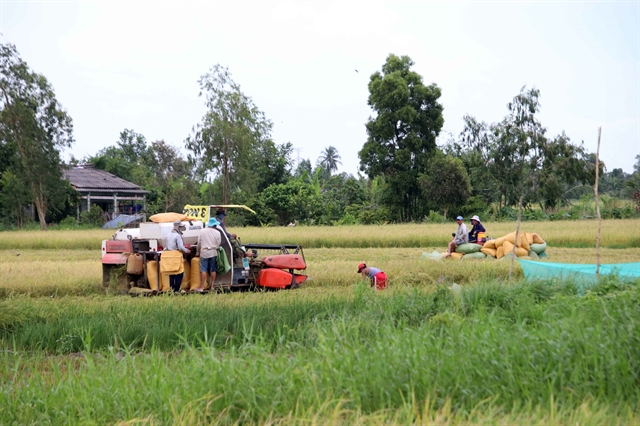 Society
Society

 |
| Farmers in Hậu Giang Province during harvest. The province decided to launch a project developing one million hectares of high-quality, low-emission rice linked with green growth in the Mekong Delta region by 2030. — VNA/VNS Photo |
HẬU GIANG — The Ministry of Agriculture and Rural Development in collaboration with the Mekong Delta province of Hậu Giang on Tuesday held a ceremony to launch a project on developing one million hectares of high-quality, low-emission rice linked with green growth in the Mekong Delta region by 2030.
The project aims to increase value, sustainably develop the country’s rice industry, increase incomes for rice farmers, protect the environment, and contribute to realising Việt Nam’s environment commitment.
Under the project, greenhouse gas emissions from rice farming are expected to be reduced by more than 10 per cent and low-emission, high-quality rice will account for over 20 per cent of the total for export in the entire specialised rice farming region.
Speaking at the event, Minister of Agriculture and Rural Development Lê Minh Hoan highlighted that throughout the implementation of the project, there will be experimental trials of new policies, including paying carbon credits based on performance, focusing on low-emission production tied to green growth, and developing an agricultural economy with a circular approach.
At the 26th United Nations Climate Change Conference (COP26) in the UK in 2021, Việt Nam committed to cutting emissions to net zero by 2050, which poses challenges and difficulties for Việt Nam’s rice industry and requires it to change, Hoan said.
Carolyn Turk, country director of the World Bank in Việt Nam, said that the implementation of the project in the Mekong Delta region, Việt Nam’s rice bowl, will boost the country’s rice production.
She said she believes that the project will effectively support Vietnamese farmers and agriculture, adding the application of science and technology not only helps reduce greenhouse gas emissions but also increases productivity, reduces input costs and overall brings a 30 per cent increase in profits for farmers, thus helping Việt Nam achieve goals in protecting the environment and improving farmers' lives as well as food security. — VNS




